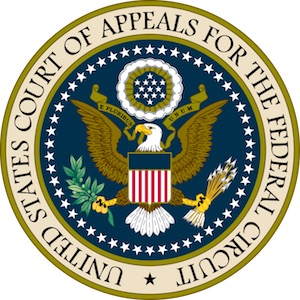 The United States Patent and Trademark Office issued a new memorandum to patent examiners on recent software patent eligibility decisions from the Federal Circuit. The memo sent to the patent examining corps from Robert Bahr, Deputy Commissioner for Patent Examination Policy, provides examiners with a discussion of McRo, Inc. v. Bandai Namco Games America and BASCOM Global Internet Services v. AT&T Mobility. What follows is my summary of these two important cases.
The United States Patent and Trademark Office issued a new memorandum to patent examiners on recent software patent eligibility decisions from the Federal Circuit. The memo sent to the patent examining corps from Robert Bahr, Deputy Commissioner for Patent Examination Policy, provides examiners with a discussion of McRo, Inc. v. Bandai Namco Games America and BASCOM Global Internet Services v. AT&T Mobility. What follows is my summary of these two important cases.
BASCOM v. AT&T (Decided June 27, 2016)
The claims generally recited a system for filtering Internet content. The claimed filtering system is located on a remote ISP server that associates each network account with (1) one or more filtering schemes and (2) at least one set of filtering elements from a plurality of sets of filtering elements, thereby allowing individual network accounts to customize the filtering of Internet traffic associated with the account. The patent explains that the advantages of the invention are found in the combination of the then-known filtering tools in a manner that avoids their known drawbacks. The claimed filtering system avoids being “modified or thwarted by a computer literate end-user,” and avoids being installed on and dependent on “individual end-user hardware and operating systems” or “tied to a single local area network or a local server platform” by installing the filter at the ISP server. Thus, the claimed invention is able to provide individually customizable filtering at the remote ISP server by taking advantage of the technical capability of certain communication networks.
Under Step 2A of the Alice/Mayo framework, the Federal Circuit agreed with the district court that the filtering of content is an abstract idea because “it is a long-standing, well-known method of organizing human behavior, similar to concepts previously found to be abstract.” With respect to Step 2B, the court acknowledged that the limitations of the claims, when viewed individually, do recite a generic computer network and Internet components, none of which is inventive by itself. Based on the procedural posture of the case (i.e., a motion to dismiss where all inferences are to be given to the non-moving party) the court explained that the specific method of filtering Internet content claimed could not as a matter of law be said to be conventional or generic. Ultimately, the Federal Circuit explained that the “claims do not merely recite the abstract idea of filtering content along with the requirement to perform it on the Internet… Nor do the claims preempt all ways of filtering content on the Internet.” Thus, the Federal Circuit determined that the inventive concept could be found in the ordered combination of claim limitations (i.e., the lower court could find that there is “significantly more”).
McRo v. Bandai (Decided September 13, 2016)
The patents relate to automating a part of a 3D-animation method. Essentially, the patents cover lip synchronization of animated characters so that the lips of the animated character move realistically. The claims covered an improvement, which was pivotal in the Federal Circuit analysis. The district court had determined that the claim was drawn to the abstract idea of automated rules-based lip synchronization of a 3D animation. Under Step 2A, the Federal Circuit disagreed with this articulation of the abstract idea, reminding of previous admonitions about oversimplifying the claims by looking at them generally and failing to take into account the specific limitations in the claim itself. The Federal Circuit explained that the claims themselves set out meaningful requirements for a first set of rules and application of those rules. “When looked at as a whole, claim 1 is directed to a patentable, technological improvement over the existing, manual 3-D animation techniques. The claim uses the limited rules in a process specifically designed to achieve an improved technological result in conventional industry practice.” Therefore, the claim was not directed to an abstract idea and the court did not need to reach Step 2B.
On the issue of the role of preemption in the patent eligibility analysis, the Federal Circuit explained that the preemption concern arises if claims try to improperly monopolize the basic tools of scientific and technological work, not when they are directed to a specific invention. Thus, the court looks “to whether the claims in these patents focus on a specific means or method that improves the relevant technology or are instead directed to a result or effect that itself is the abstract idea and merely invoke generic processes and machinery.”
For more discussion of patent eligibility, please see How to Patent Software Post-Alice and A Guide to Software Patent Eligibility at the Federal Circuit.
Tags: Federal Circuit, patent, Patent eligibility, patents, software patent, software patents




You share in the PLI Practice Center community, so we just ask that you keep things civil. Leave out the personal attacks. Do not use profanity, ethnic or racial slurs, or take shots at anyone's sexual orientation or religion. If you can't be nice, we reserve the right to remove your material and ban users who violate our Terms of Service.